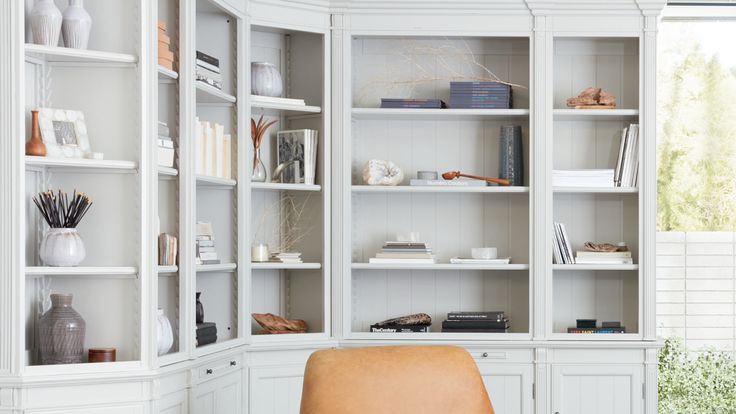We’ve all seen them with virtual Zoom backgrounds that immediately scream, “I’m using a fake background.” The edges that shimmer, the hair that disappears, the office that looks like it belongs in a 90s sitcom. But here’s the thing: virtual backgrounds can look genuinely professional when done right. The difference isn’t just the image you choose; it’s understanding how lighting, setup, and psychology work together.

Why Most Virtual Zoom Backgrounds Fail
Before diving into what works, let’s understand why most virtual backgrounds look fake:
Technical issues:
- Poor lighting creates harsh edges and color spill
- Low-quality webcams struggle with edge detection
- Busy or unrealistic backgrounds draw attention to imperfections
- The wrong perspective makes you look like you’re floating in space
Psychological factors:
- Overly perfect environments feel artificial
- Distracting elements pull focus from your message
- Mismatched lighting between you and the background
- Backgrounds that don’t match your professional context
The goal isn’t to fool anyone; it’s to create a clean, professional appearance that doesn’t distract from your message.
The Science of Professional Virtual Backgrounds

Color Psychology in Professional Settings
Different colors communicate different messages in business contexts:
Navy blue and dark grays: Authority, trustworthiness, stability
Soft whites and light grays: Cleanliness, minimalism, modern approach
Warm browns and tans: Approachability, reliability, traditional values
Muted greens: Growth, balance, harmony
Colors to avoid:
- Bright reds (aggressive, distracting)
- Neon or fluorescent colors (unprofessional)
- Busy patterns (compete for attention)
- High contrast elements (create edge detection problems)
Lighting That Works
The secret to professional-looking virtual backgrounds isn’t the background itself’s matching your lighting to the background’s lighting.
Key lighting principles:
- Direction: Your lighting should come from the same direction as the background’s lighting
- Temperature: Match warm/cool tones between you and the background
- Intensity: Avoid being much brighter or darker than your virtual environment
- Softness: Use diffused lighting to minimize harsh shadows
Practical setup:
- Place a soft light source (ring light or window) in front of you
- Position it slightly above eye level
- Use a white wall or backdrop behind you for better edge detection
- Avoid backlighting from windows or bright lights behind you
Professional Background Categories That Work
1. The Modern Office
These backgrounds suggest competence and contemporary business sense without being distracting.
What makes them work:
- Clean lines and minimal furniture
- Neutral color palettes
- Subtle textures that don’t compete with your presence
- Proper perspective that makes you look naturally placed
Best practices:
- Choose backgrounds with soft, indirect lighting
- Avoid backgrounds with obvious brand logos or text
- Look for subtle depth of field (slightly blurred background elements)
- Ensure the “desk” or surface level matches your natural sitting position
2. The Classic Library/Bookshelf
The bookshelf background is popular for good reason; it suggests knowledge and sophistication without being flashy.
How to do it right:
- Choose bookshelves with muted, varied spine colors
- Avoid perfectly organized or color-coordinated books (looks fake)
- Look for subtle lighting that creates natural shadows
- Ensure the shelf height matches your sitting position
Pro tip: Slightly blurred bookshelves work better than pin-sharp ones. The blur suggests a natural depth of field from a real camera.
3. The Minimalist Approach
Sometimes, less is more. Clean, simple backgrounds put full focus on you and your message.
Effective minimalist backgrounds:
- Subtle gradients from light to slightly darker tones
- Soft geometric patterns (very subtle)
- Clean walls with interesting but not distracting textures
- Simple architectural elements like columns or clean corners
4. The Upscale Home Office
These backgrounds suggest success and professionalism while maintaining warmth.
Key elements:
- High-quality furnishings without being ostentatious
- Warm but professional color schemes
- Natural materials like wood and stone
- Subtle personal touches that don’t dominate
Technical Setup for Professional Results
Camera and Positioning
Your camera setup is crucial for professional-looking virtual backgrounds:
Camera height: Position your camera at eye level. Looking down at your camera makes any background look unnatural.
Distance: Sit 2-3 feet from your camera. Too close and edge detection suffers; too far and you lose presence.
Angle: Face the camera straight on. Angled positions make background alignment obvious.
Lighting Setup That Works
The three-point lighting approach:
- Key light: Your main light source (ring light, desk lamp, or window)
- Fill light: Softer light to eliminate harsh shadows
- Background light: Subtle lighting behind you to separate you from your actual background
Budget-friendly setup:
- One ring light or LED panel in front
- White poster board as a reflector for fill light
- Natural window light as background separation
Software Settings That Matter
Most people use default settings, but these adjustments make a huge difference:
Zoom settings optimization:
- Go to Settings > Background & Filters
- Enable “I have a green screen” (even if you don’t) for better edge detection
- Try “Mirror my video” – it can improve background stability
- Test different virtual background options to find what works with your setup
Third-party alternatives:
- XSplit VCam: Better edge detection than Zoom’s built-in options
- ChromaCam: Professional-grade background replacement
- NVIDIA Broadcast: Excellent AI-powered background removal (requires a compatible graphics card)
The Psychology of Professional Backgrounds
Matching Your Industry
Your background should align with your professional context:
Corporate/Finance: Clean, modern offices with neutral colors
Creative Industries: Interesting textures and warmer tones, but still professional
Healthcare: Clean, bright environments that suggest cleanliness and care
Education: Bookshelves, warm lighting, approachable but authoritative
Technology: Modern, minimalist, forward-thinking environments
Reading the Room
Different types of meetings call for different approaches:
Client presentations: Conservative, clean backgrounds that won’t distract
Team meetings: Warmer, more personal backgrounds that encourage connection
Interviews: Professional but not intimidating, suggesting competence
Casual check-ins: Slightly more relaxed, but still maintaining professionalism
Common Mistakes That Scream “Fake”
The Floating Head Effect
This happens when your background is too perfectly lit or doesn’t match your natural lighting. You look like you’re floating in front of a poster.
Solutions:
- Add subtle shadows or texture to your background
- Match the lighting direction and intensity
- Use backgrounds with natural lighting variations
The Perspective Problem
Many backgrounds have obvious perspective issues: you look like a giant, or the furniture doesn’t align with your position.
Fix this by:
- Choosing backgrounds shot from a similar camera angle
- Ensuring surface levels (desks, tables) align with your natural position
- Avoiding backgrounds with strong perspective lines
The Uncanny Valley
Backgrounds that are too perfect or artificial trigger our instinct that something’s not right.
Avoid this by:
- Choosing backgrounds with subtle imperfections
- Using natural lighting variations
- Selecting environments that look lived-in, not staged
Creating Custom Professional Backgrounds
DIY Background Photography
If you want truly professional results, consider creating your backgrounds:
Setup requirements:
- Good lighting (natural or artificial)
- High-resolution camera (smartphone works)
- Stable tripod or surface
- Real professional environment
Shooting tips:
- Use the same camera angle you’ll use for video calls
- Ensure even, soft lighting
- Shoot in high resolution for cropping flexibility
- Take multiple shots with slight variations
Professional Background Services
Several services specialize in creating custom virtual backgrounds:
When to consider professional services:
- Regular high-stakes video calls
- Company-wide branding needs
- Unique industry requirements
- Budget allows for custom solutions
The Future-Proof Professional Setup
Investing in Quality
Instead of constantly fighting with virtual backgrounds, consider investing in your actual setup:
Physical improvements:
- Better lighting equipment
- Improved camera quality
- Acoustic treatment for better audio
- Cleaner actual background
This approach offers:
- No edge detection issues
- Better overall video quality
- More authentic appearance
- Reduced cognitive load during calls
Hybrid Approaches
The most professional setups often combine real and virtual elements:
Effective combinations:
- Clean real background with subtle virtual enhancement
- Real lighting with virtual background cleanup
- An authentic environment with virtual branding elements
Making It Work for You
Testing and Iteration
The key to professional virtual backgrounds is testing and refinement:
Regular testing routine:
- Test lighting at different times of day
- Record yourself to see what others see
- Ask trusted colleagues for honest feedback
- Adjust based on different meeting types
Building Your Background Library
Create a collection of 3-5 professional backgrounds for different situations:
Essential collection:
- Ultra-professional (client meetings, interviews)
- Warm professional (team meetings, casual calls)
- Industry-specific (specialized contexts)
- Backup option (when technical issues arise)
The Bottom Line
Professional virtual backgrounds aren’t about deception; they’re about creating a clean, distraction-free environment that supports your message. The best virtual backgrounds are the ones people don’t notice because they’re focused on what you’re saying.
The difference between amateur and professional results comes down to understanding that virtual backgrounds are part of a complete video call setup. Lighting, camera position, background choice, and technical settings all work together to create an authentic, professional appearance.
Start with the basics: good lighting and a simple, clean background, then gradually refine your setup. The goal isn’t perfection; it’s creating a professional environment that lets your expertise shine through without technical distractions getting in the way.
Remember: the most professional background is the one that disappears into the background, letting your message take center stage.



